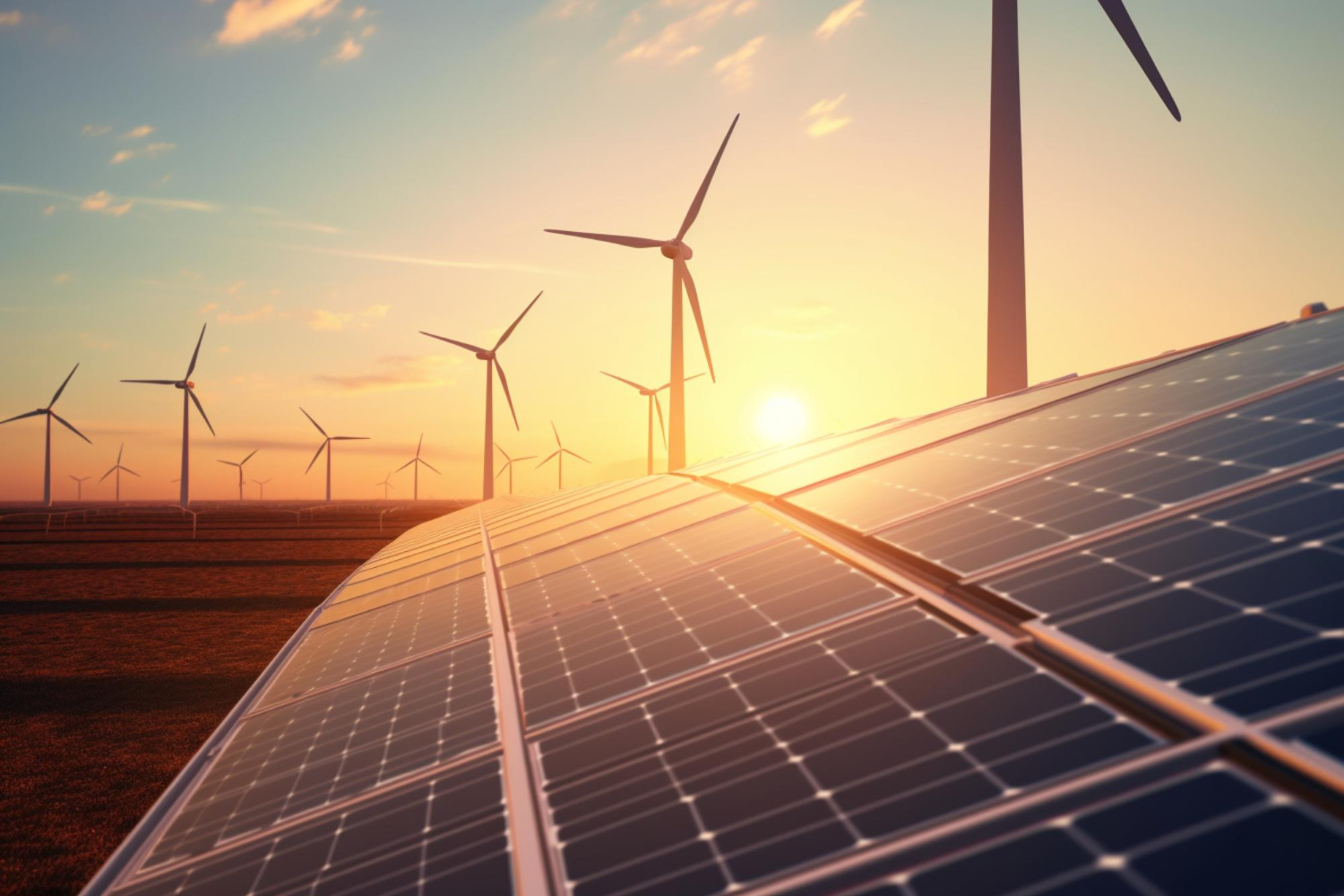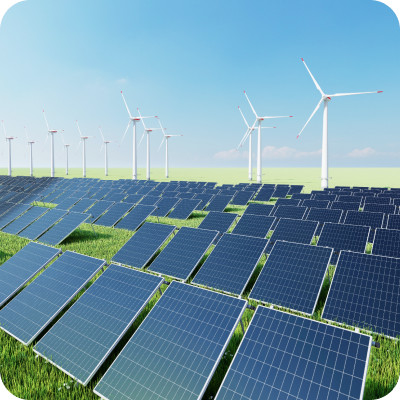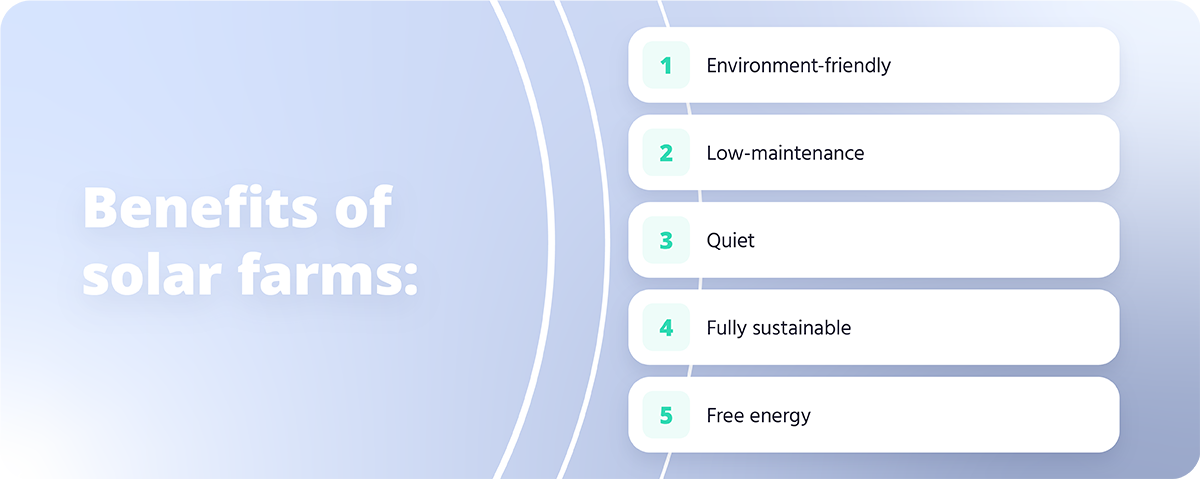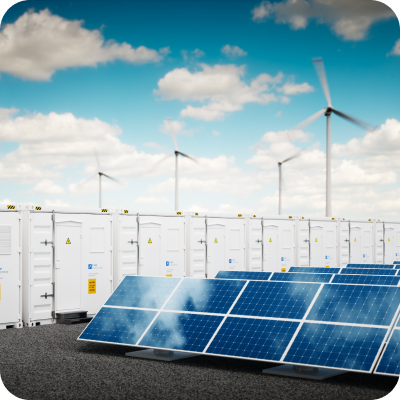Solar farm management with the help of smart grids

With solar panels and batteries getting cheaper and the prices for energy from regular fossil fuels only increasing, it’s not surprising that both household owners and businesses are now investing in solar power. While for household owners or small businesses having a few panels installed on their building roof might be enough though, for larger companies, the situation is a bit more tricky. To cover all or most of their energy needs, those companies are often deciding to invest in building solar farms instead.
To earn as much as they can from the solar farms though, businesses need to keep an eye on their farm performance – and this might be pretty difficult though, especially when it comes to large farms or those spread across multiple locations.
In the future, some of the issues might be solved by integrating solar farms with smart grids though. What are the main reasons businesses should consider investing in solar farms, and how smart grids might help manage those in the future?
What are solar farms?
Solar farms (which you’ll sometimes see being called solar parks) are large-scale solar installations made of hundreds or thousands of photovoltaic panels. Similar to residential solar panels, they absorb the sun’s energy and convert it into electricity that businesses can use. The main difference is in how large the installations are.
Domestic solar panel systems typically have a capacity of between 1 kW and 4 kW, depending on how many panels are installed. However, that wouldn’t be enough for business needs. So to generate enough renewable energy, businesses are instead installing several solar panels on their land.
To show you just how large the farms can be, here are a couple of examples:
- Meta’s (formerly Facebook) solar farm installation generates more than 3.59 GW of electricity.
- Amazon’s solar installation generates 1.5 GW of electricity coming from solar power
- Apple’s solar farm can currently generate 987 MW of electricity – by 2030, though, they hope to generate 3 GW of electricity coming from solar power.
- Non-business example: Bhadla Solar Park in India is made of over 10 million solar panels and can generate 2.25 GW of clean energy annually. The Huanghe Hydropower Hainan Solar Park meanwhile has a capacity of 2.8 GW.
Because of the size, solar farm installations are typically mounted on the ground. However, some research has shown that buildings with large flat roofs (such as supermarkets) can also make ideal sites for solar farms, though the roof size can be limiting here.

What can you gain from building a solar farm?
Over the last fear years, solar technology turned from an experimental idea to one of the most promising clean energy sources, especially looking at how much more efficient solar panels have become. Plus, with the various government benefits and tax write-offs and with the dropping costs of panels and batteries, building solar installations also became more affordable.

What other benefits of solar farms are there?
1. Environment-friendly
Solar panels only need sunlight to generate energy – nothing else. As such, they don’t need any fossil fuels and do not release harmful atmospheric substances into the atmosphere.
What’s even more amazing though, is that solar panels can also boost local biodiversity. According to one research, PV panels can protect small mammals and birds by providing shelter from rain and predators. The area under and between the solar installations can also be used to grow crops, pollinator-friendly plants, or even as a grazing area for animals, allowing businesses to make better use of land.
2. Low-maintenance
After they are installed, the solar panels need very little maintenance. The only thing you might need is to clean them once in a while (as dirt or dust might make them less effective), and that’s it. In comparison to other energy generation methods that require frequent inspections and maintenance, solar farms will hardly require any attention.
3. Quiet
The majority of fossil fuel-powered energy-generating machines are noisy. A 50kW diesel generator set can typically produce around 85 dB when working – as loud as city traffic. A 1500kW engine can emit even around 105 decibels – similar to a jet engine that would be 1000 feet above our heads.
Solar panels meanwhile are made to be quiet – the most you will hear is a murmuring sound. Therefore, solar farms can be set up even in densely populated areas without worrying that neighbors will consider them a nuisance.
4. Fully sustainable
One of the reasons why turning to renewable energy is becoming a priority is that we are quickly running out of fossil fuels. Researches suggests that oil supplies will last only for around 51 years and coal for 114 years. We can’t exactly count on the supplies renewing themselves anytime soon either. With solar power though, we don’t have to worry about the resources running out any time soon.
As long as the sun keeps shining (and it will keep shining for around 7 billion to 8 billion years), we can use solar panels to generate energy.
5. Free energy
While solar installation is still quite costly, businesses can get the money back quickly through free energy. Even though the panels can’t turn 100% of sun rays into electricity yet, during sunny days, the panels might actually generate more power than is needed at the moment.
Then, you can either store the extra energy for later inside a storage system (and use it when the panels are creating little to no energy) or sell it back to the grid for credits you can use when you need more grid energy. That way, you can keep powering your business with solar energy (or credits coming from selling the surplus energy) even during winter days.
Why building solar farms can be challenging?
For all those benefits of solar farms, there are a few things that make them quite difficult to build.

1. Finding space
The first problem is finding enough space for solar farms. Since commercial solar panels are typically much bigger than residential ones and must be mounted to the ground, you’ll need a suitable land area. To set up a small solar farm, you’ll need from 15 to 20 acres – and the more energy you want to generate, the more land you should have prepared.
Plus, you also need to ensure that the grounds for solar farms don’t have any shading-creating obstructions nearby (buildings, large trees, etc.) that could lower the panels’ efficiency.
2. Cost
Building a solar farm is a costly investment, so you should plan your finances carefully and thoroughly before you begin. The cost of setting up a solar farm will, of course, depend on several factors like location, solar panels size and price, installation, storage needs, etc. The cost of building a large solar farm is approximately $800,000 to $1.36 million per megawatt of power, although utility-scale solar farms can cost millions of dollars.
You can see most of the money back within five to ten years though, especially if you are selling the surplus energy back to the grid. With the energy costs growing, you might see that the investment in solar farms pays off even faster.
3. Long development
As well as being quite expensive at the start, solar farms also take a long time to build. On average, a standard ground-mounted solar farm installation takes 3 months per 2 MW. So depending on the planned size of your solar farm, it might take a year, but for larger farms, the project might take 3-5 years or more.
In most cases, that time is spent planning the solar farms, obtaining development permits, and finishing land acquisition if you are buying a new piece of land for the farm. After you have everything prepared, then the installation part itself will only take a couple of months, depending again on the size of your farm.
4. Farm management
Keeping track of all your solar plants might become more complex as your solar farm grows. Sure, the solar panels themselves might not need much managing besides regular cleaning. Still, you will need to know how much energy your farm is generating and whether you have enough electricity to sell it to the grid or do you need to draw more power from it. With a large-scale solar farm or several farms spread across the city or country, monitoring each panel’s performance might be impossible.
Another important thing is that if the solar panels are connected to the grid and there’s a power outage, then the solar panels will stop working as well – to not affect the grid installation by sending energy to it. That means that any nearby power issue might cause your entire solar farm to shut down – and unless you have a storage system, leave you without an energy source until the outage is fixed.
Using smart grid technology for better solar farm management
Supervising your entire infrastructure for any potential malfunctions manually isn’t exactly doable though. However, there might be a solution on the horizon to ensure your solar farm is running smoothly but without having to manually managing each installation. Namely, smart grids.
As our regular power grids were not designed to support renewable energy, connecting solar panels to the grid and managing the generated energy can be quite complicated. Turning to smart grids, though could solve the majority of the issues related to using and managing solar farms (or other renewable power generators):
- As the smart grids will keep gathering and updating the information coming from the solar farms, companies will be able to monitor their solar panel performance at all times. Plus, managing renewable power plants spread across different locations will be much easier as well, thanks to all of them being connected to one network.
- Smart grids can provide recommendations for actions solar farm owners should take to make the best use of their energy, based on energy generation, usage, and storage amounts.
- Smart grids can connect multiple energy resources (solar farms, wind farms, microturbines, and others) into one system, allowing companies to use all of them as they need. For example, when the solar panels efficiently drop, the grid system can smoothly turn to using stored or a different type of renewable energy plant.
- Thanks to managing the entire infrastructure 24/7 and alerting the owners whenever one of the integrated systems starts behaving abnormally, farm owners will be able to fix any technical issues in advance and prevent outages.
- Demand Response systems will allow businesses to analyze their usage in real-time and then increase or decrease their energy demand in response to peak loads.

The technology is still relatively new, so we will have to wait a while before we can use smart grids to their full power. The biggest drawbacks of smart grids are that they are incredibly time-consuming to build, making them very expensive.
For now, a simpler option would be to invest in a tailored solar farm management system through which you can monitor the condition and performance of your solar farms.
If you are now looking for such a solution, how about reaching out to us at Codibly? We have developed quite a few custom solar farm management platforms to fit each business’s needs – so surely we’ll be able to design a solution for your solar farm as well.
Conclusion
Solar energy is a clean, safe, and renewable energy source, making it an ideal option for powering our houses and businesses. Regular solar panels might not be enough to cover all of your business energy needs though, so here investing in solar farms might be worth considering, especially if you have a plot of land you can put the solar panels on.
In the future, you’ll also be able to use smart grids to make managing your solar farms easier and make your solar installation more efficient and reliable. And then, turning your business fully green will be easier than ever.
contact us
Need expert guidance on your next energy project?
Reach out to us and discover how Codibly can offer tailored solutions to drive your business.